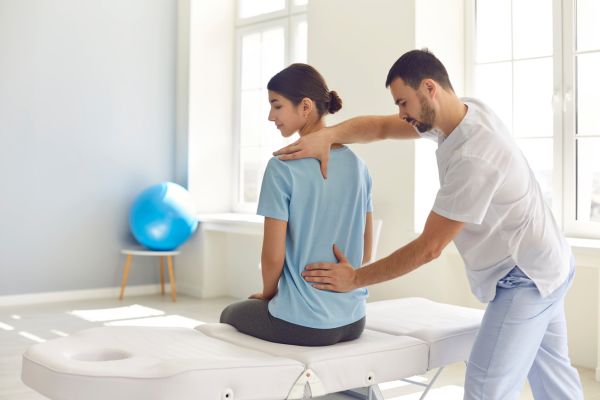Living with endometriosis can feel like carrying a hidden weight every single day. The cramps, fatigue, and constant discomfort often go beyond “just bad period pain.” If you’ve been searching for real endometriosis pain relief, you’re not alone—and honestly, it’s a journey many people are still figuring out. The good news? There are ways to manage the pain, improve daily life, and reclaim a sense of control. Let’s talk about them in a way that’s real, practical, and hopefully a bit comforting.
Understanding Endometriosis Pain
Endometriosis happens when tissue similar to the lining of the uterus starts growing in places it shouldn’t—like the ovaries, fallopian tubes, or pelvic lining. These cells react just like the uterine lining during your cycle, which means inflammation, bleeding, and scarring. And the result? Pain. Sometimes the kind that makes you curl up in bed for hours.
But here’s the thing: endometriosis pain isn’t one-size-fits-all. For some, it’s sharp cramps that feel worse than labor contractions. For others, it’s a dull, dragging ache in the lower back or pelvis that lingers long after the period ends. Knowing your own pain pattern is the first step toward finding real endometriosis pain relief.
Medical Approaches to Pain Relief
Doctors often start with pain medication. Over-the-counter NSAIDs like ibuprofen can help reduce inflammation and dull cramps, though they don’t always tackle the root problem. If pain is stubborn, prescription meds or stronger options may be suggested. Some people also find relief through hormonal treatments—birth control pills, hormonal IUDs, or injections that help regulate or suppress estrogen. Why estrogen? Because this hormone fuels endometriosis growth, and cutting it back often means less pain.
In more severe cases, surgery might be on the table. Laparoscopy is commonly used to remove or burn away endometriosis patches. While it’s not always a permanent fix, it can bring meaningful relief. The important thing here is to have an open, honest talk with a healthcare provider about what’s realistic for your body and lifestyle.
Lifestyle Shifts That Make a Difference
Now, let’s be real. Medication and surgery aren’t the only answers. For many people, daily habits play a huge role in managing endometriosis pain relief. Movement, for example, might feel impossible on painful days—but gentle exercise like yoga or walking can ease tension, improve blood flow, and release those natural pain-fighting endorphins.
Food is another piece of the puzzle. While there’s no universal “endo diet,” some notice less inflammation when they cut back on processed foods, dairy, or red meat, and add more leafy greens, omega-3-rich fish, or turmeric. It’s not about restriction—it’s about experimenting with what makes your body feel lighter, calmer, and less inflamed.
Don’t underestimate the power of rest either. Sleep isn’t just about recharging—it’s when the body heals. Creating a nighttime routine, ditching screens before bed, or even adding a weighted blanket can make sleep more restorative, which in turn helps the body handle pain better.
Natural and Alternative Approaches
Some people find relief outside traditional medicine. Heat therapy, like hot water bottles or heating pads, is a go-to for a reason. It relaxes tense muscles and improves blood circulation. Acupuncture is another option—small needles might sound intimidating, but studies suggest it can reduce pelvic pain for some.
Herbal remedies and supplements, like ginger or magnesium, are also gaining attention. While the research is still catching up, many swear by them for easing cramps and calming inflammation. The key here is to experiment carefully, ideally with a healthcare professional who can guide you on safety and dosage.
The Emotional Side of Pain Relief
Here’s something that doesn’t get talked about enough: the mental load of endometriosis. Chronic pain takes a toll not just on the body, but on the mind. Stress, frustration, and even depression can make pain feel worse. So, emotional care is just as important as physical care.
Support groups, whether in person or online, can be life-changing. There’s something incredibly powerful about talking to people who get it. Therapy, journaling, or even just venting to a trusted friend can help lighten the emotional weight. Remember—endometriosis pain relief isn’t just about the cramps. It’s about finding ways to feel whole again.
Small Everyday Tricks That Help
Sometimes it’s the little things that add up. Keeping a pain diary can help track flare-ups and triggers. Wearing loose, comfy clothes during painful days prevents extra pressure on the abdomen. Even planning ahead—like scheduling important events around your cycle—can reduce stress and make pain easier to manage.
Another underrated tool is mindfulness. It won’t magically erase pain, but practices like meditation, deep breathing, or body scans can help calm the nervous system. And when your nervous system is calmer, pain often feels a little more manageable.
When to Seek Professional Help
Endometriosis pain should never be brushed off as “just period cramps.” If the pain is interrupting your daily life—making work, relationships, or basic activities difficult—it’s time to push for medical help. Advocate for yourself, because let’s be honest, endometriosis has been dismissed for far too long in healthcare settings. You deserve answers, options, and relief.
Final Thoughts
Endometriosis pain relief is not about a single magic cure. It’s about layering different strategies—medical, lifestyle, emotional, and alternative—until you find what works for you. And that mix will look different for everyone. Some days will be better than others, and that’s okay. The important thing is knowing that relief is possible, and you don’t have to suffer in silence.
So, if you’re reading this while curled up in bed with a heating pad, know this: you’re not weak, you’re not exaggerating, and you’re definitely not alone. Finding endometriosis pain relief is a journey—but it’s one you can take step by step, with patience, compassion, and the right support by your side.



